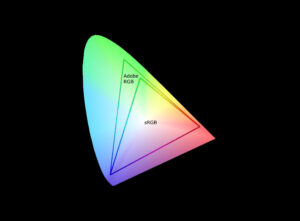If you were online in the mid-to-late ’90s, chances are your first search wasn’t on Google—it was AltaVista. It felt like magic at the time: type in a few words, and it instantly returned a treasure trove of information. No endless page loads, no chaos, just clean, fast, powerful search.
But today, AltaVista is gone. The once-mighty search pioneer now redirects to Yahoo!, and most Gen Z internet users have never even heard its name. So, what happened? How did the original king of search vanish into digital obscurity?
Let’s dig into the story of AltaVista—its rise, its fall, and the nostalgia it still sparks in anyone who used it during their middle school computer lab days.
There was never a mobile version of AltaVista
AltaVista was the search engine before smartphones existed.

Born Ahead of Its Time
AltaVista launched on December 15, 1995, the brainchild of a few brilliant engineers at Digital Equipment Corporation (DEC). Paul Flaherty, Louis Monier, and Michael Burrows developed the innovative search engine as an internal project. They named it “AltaVista,” meaning “high view” in Spanish—a fitting metaphor for its mission to give users a sweeping view of the World Wide Web.
What made it special? It was fast. It used a powerful, multi-threaded crawler called Scooter, which indexed more pages than anyone thought possible at the time. It also had a minimalist, no-nonsense interface—just a search bar and results. Simple, elegant, useful.
AltaVista was the first full-text searchable database on the web. And it wasn’t just for basic searches—it offered advanced Boolean operators, domain-specific filtering, language sorting, and even date range limits. By 1998, professional researchers crowned it the most useful search tool in the world.
Peak Popularity: The Google Before Google
AltaVista’s launch was an instant hit: 300,000 visits on its first day, and over 80 million hits daily by 1997. It wasn’t just a tech tool—it became a digital staple.
Its traffic success translated to big dollars. By 1997, AltaVista was earning $50 million a year in sponsorships. It became one of the top 10 websites globally. In fact, as late as 2000, it was still more popular than Google, holding 17.7% of the search market compared to Google’s 7%.
During this time, AltaVista powered search for Yahoo!, and it even hosted its own translation tool—Babel Fish, an early version of Google Translate. It was, for many of us, the all-in-one gateway to the web.
The Downfall: When Portals Were the Trend
Unfortunately, success led to a classic dot-com mistake: trying to be everything.
In 1998, DEC was acquired by Compaq, who didn’t understand what they had. Under new leadership, AltaVista was transformed from a lean search engine into a bloated “web portal”—think Yahoo! with shopping, news, email, weather, and a cluttered homepage.
This pivot diluted what made AltaVista great. The once-fast and focused site now tried to do too much—and did none of it particularly well. As AltaVista stumbled, Google emerged, quietly offering lightning-fast, clean, and ultra-relevant search.
By the early 2000s, AltaVista was spiraling. The dot-com bubble burst, its IPO was canceled, and its user base shrank. Eventually, it returned to its roots as a search engine—but by then, the damage was done.
The End: Acquisitions and Quiet Shutdown
In a last-ditch effort, AltaVista was sold to CMGI in 1999, then again to Overture in 2003. Overture was absorbed by Yahoo! just a few months later.
From that point on, AltaVista became a zombie brand—a shell that used Yahoo!’s search technology but maintained its old look. No innovation, no updates, no real purpose.
In 2010, a Yahoo! presentation leaked that AltaVista would be shut down. The official closure happened quietly on July 8, 2013. No farewell. No headlines. Just a redirect to Yahoo.com.
Why AltaVista Still Matters
Even though AltaVista is gone, its influence lives on. It:
- Pioneered full-text search before Google made it mainstream
- Showed the importance of clean UX years before “user experience” was a buzzword
- Highlighted the dangers of trying to be everything to everyone in tech
And for many of us, it was our first experience with the internet. It was how we looked up song lyrics, school projects, game cheats, and (admit it) early flirtations with internet rabbit holes.
It was simple. It was powerful. And it felt like the future.
A Final Thought
AltaVista wasn’t killed by bad technology. It was killed by bad strategy. Had it stuck to what it did best—search—it might have had a fighting chance. Instead, it bloated, shifted focus, and tried to compete in a market it didn’t understand.

But those of us who used it in the early days remember. And every time we open a browser and hit “Search,” a little part of us still misses that clean, blue-and-white AltaVista page.
RIP AltaVista, the search engine that helped a generation of kids do their homework. You were the best—before Google made it cool.









































































